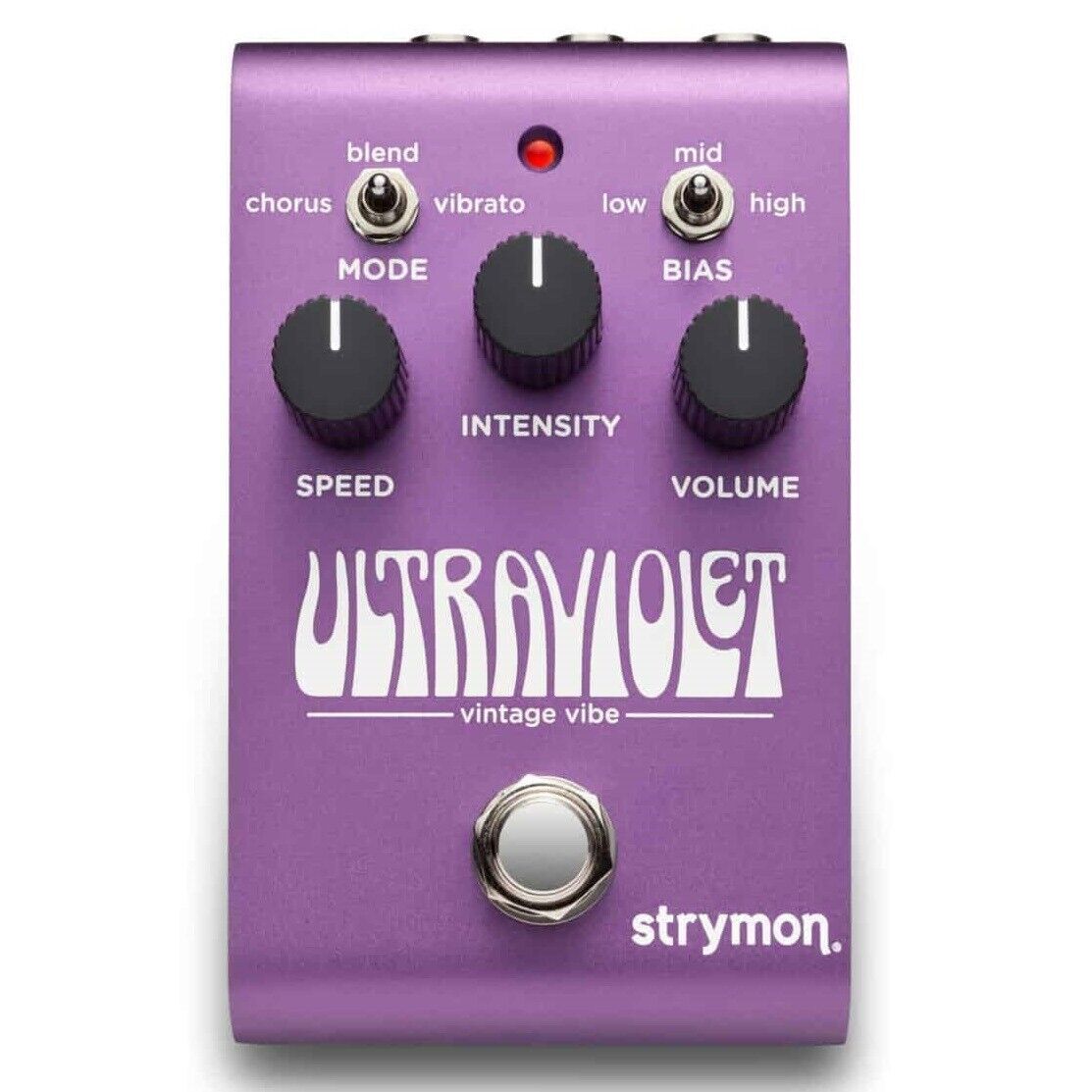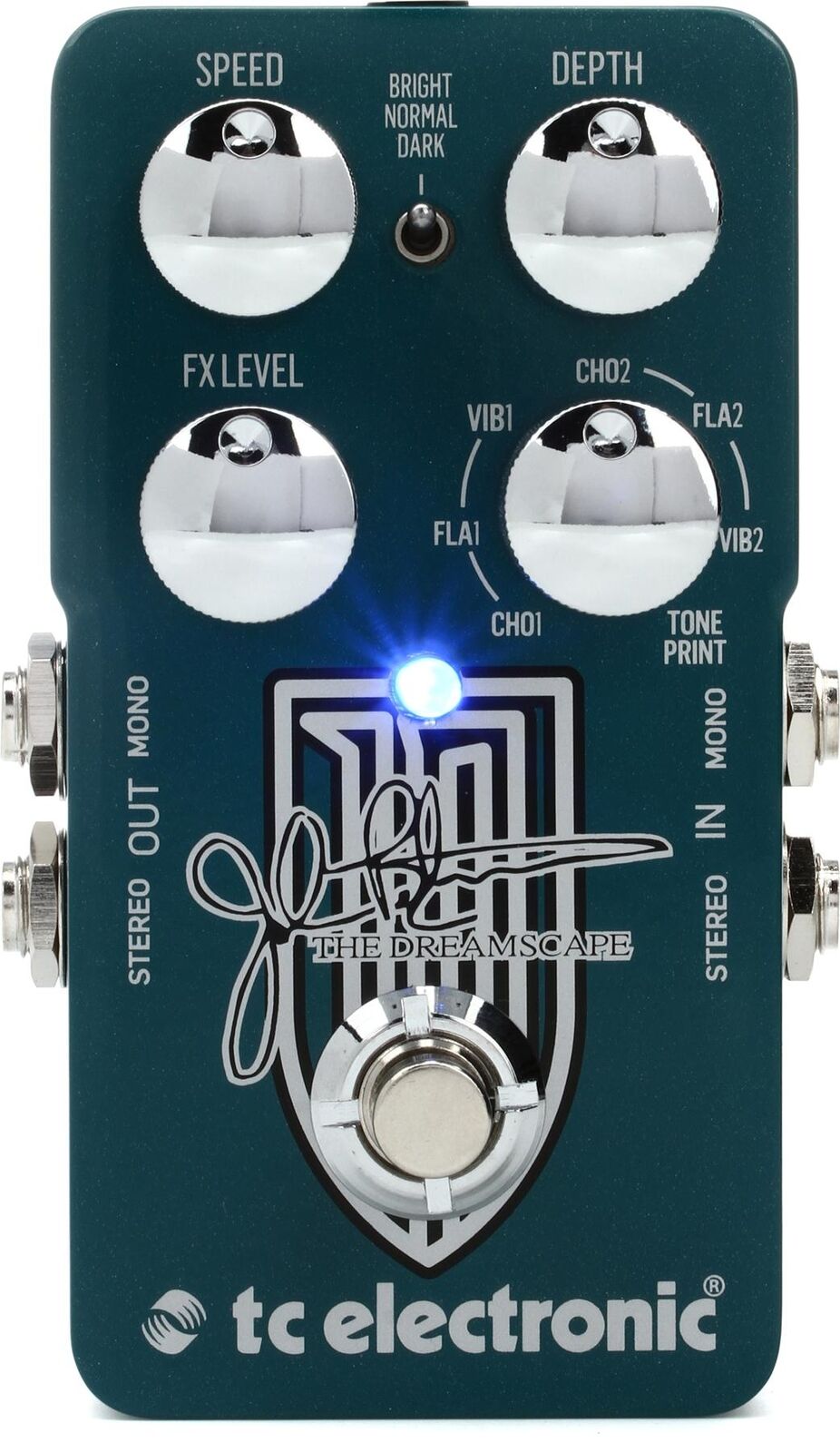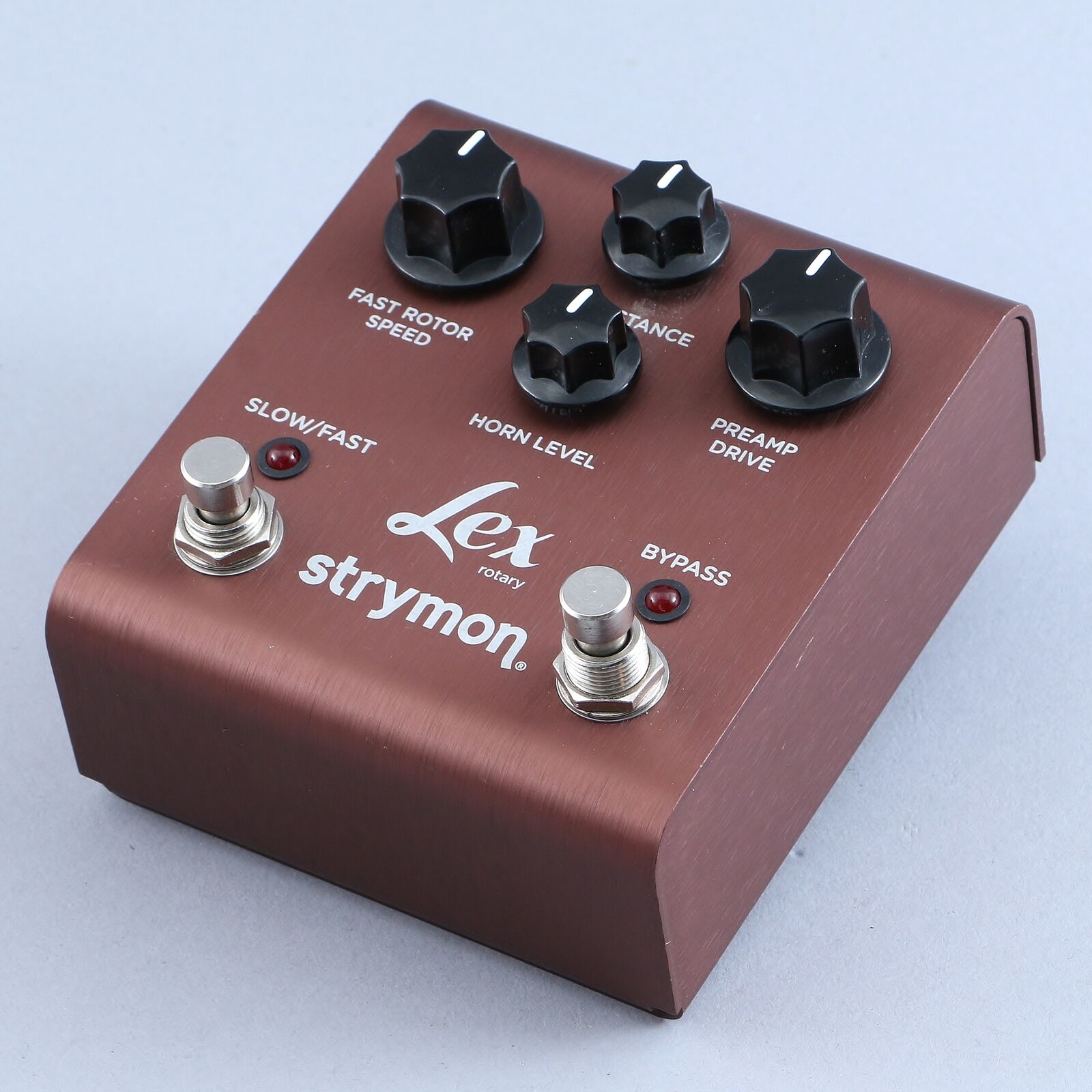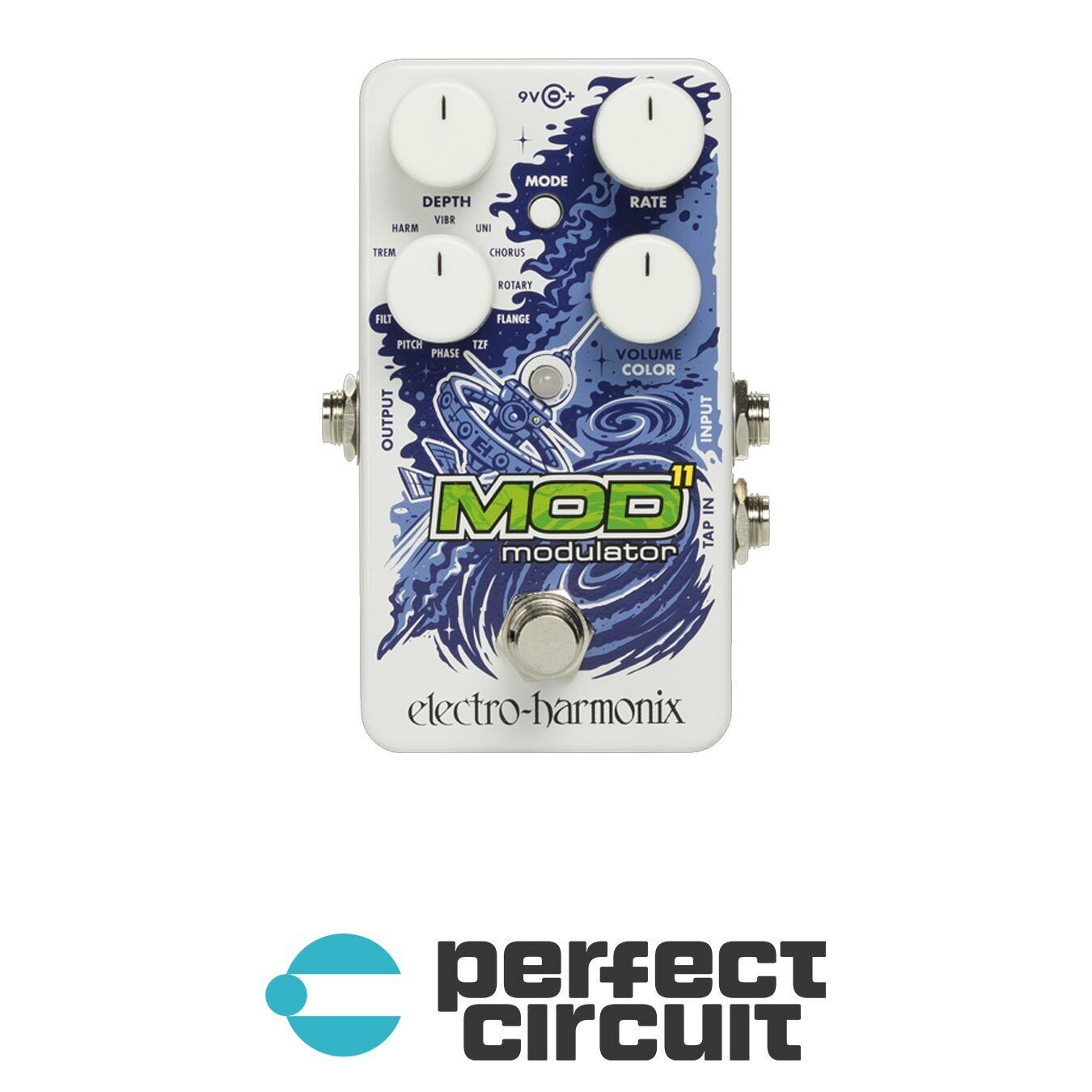-40%
New Strymon Ultraviolet Vintage Vibe Guitar Effects Pedal
$ 136.75
- Description
- Size Guide
Description
New Strymon Ultraviolet Vintage Vibe Guitar Effects PedalThis item is new, in box!
Orders placed before 12:00 PM Eastern Standard Time will ship same day! Orders placed after 12:00 will often ship same day as well, if not, they will ship next day.
I am an Authorized Dealer, a store receipt will be included with your purchase.
Check my feedback and bid with confidence!
From Strymon:
Quintessential Vibe
A warm grittiness to the warble, a rippling, wooshing, bubbling irregularity to the modulation and a dynamic response to your picking are all hallmarks of the true vibe experience.
Thicker and chewier than any chorus, earthier than any phaser and uniquely magical in front of a driven amp, the perfect vibe pedal moves you to dig in and play without inhibition.
This feeling has been difficult to find outside of large and expensive fully-analog boutique units, but the search for that elusive experience is now over.
Delivering vintage vibe tone that’s second to none with simple and powerful controls for instantly obtaining a rich variety of captivating sounds, UltraViolet is the vibe pedal you’ve been looking for.
Vintage Plus
UltraViolet’s simple and responsive controls provide a wider range of sounds than traditional vibe pedals.
In addition to the familiar Chorus (50% wet) and Vibrato (100% wet) settings, there is a new Blend setting (30% wet) for an inspiring variety of more subtle effects.
A Bias switch gives you three distinct flavors of sweep shape and tone emphasis, allowing for tons of sonic variation.
At slow speeds, the intensity range has been expanded beyond that of traditional vibe circuits to push even further into warmly undulating sonic territory.
UltraViolet gives you all the classic vibe tones—and more.
All New Algorithm
For UltraViolet’s new vibe algorithm, all the elements of the classic optical vibe circuit (and their interdependencies) have been meticulously recreated for a dynamic playing response.
From the effects of bias, speed and LFO waveshape on the pulsing of the lamp, to the response of the light-dependent resistors that set the center frequencies of the staggered phasing filters, the entire system has been duplicated and carefully tuned to produce the very best sounds a vibe pedal can offer.
Stereo MIDI Rig Ready
TRS stereo input and output in a dual mono configuration means you can place UltraViolet at any point in your pedal chain with no impact on your stereo image.
Full MIDI implementation with 300 available preset locations ensures that UltraViolet is ready for your MIDI rig.
In addition to TRS MIDI, there is a USB-C jack for controlling the pedal via MIDI from a computer or for performing firmware updates.
For hands-free control without MIDI you can connect an expression pedal for control over any combination of knobs in any direction (Expression pedal controls Speed by default.) Or attach an optional external switch for tap tempo or favorite recall.
Finally, a high-impedance, ultra-low noise discrete Class A JFET stereo input preamp provides exceptional touch sensitivity, dynamics and feel—all in a rugged and elegantly compact form factor.
Sound Design
Selectable Bias
Vibration Variation.
One aspect of vintage vibe pedals is variation in the way each unit sounds. Even two identical pedals manufactured the same year are likely to sound different from one another, and a single pedal may not sound quite the same year after year.
Some of this variation in vintage circuits can be traced to drift in the setting of an internal bias trimpot, which has a marked impact on the sonic character of the pedal, affecting the shape and timing of the warble as well as frequency emphasis. The thing is, some of these variations can sound pretty great!
So with UltraViolet, we included a Bias switch in order to reliably cover the full range of the best vibe tones. Under the hood, the switch not only changes the bias level, but also optimizes the LFO waveshape for the selected bias to create the most inspiring vibe experiences possible.
The Low setting produces a pulsing character well-suited for tremolo effects (especially in Blend Mode). The Mid setting has a balanced character capable of producing many of the most sought-after classic vibe effects, while the High setting has a smoother shape with a wider frequency sweep, able to create sounds evocative of Pink Floyd’s “Breathe.”
Blend Mode
Mixed Signals.
UltraViolet’s Mode switch sets the mix between wet and dry signals.
Chorus Mode gives you a 50/50 mix for the deepest, whooshy, gooey vibe tones. Many classic vibe tones can be achieved at moderate Speed settings, with Intensity between midpoint and maximum in Chorus Mode.
Vibrato Mode is 100% wet for responsive, frequency-dependent phase vibrato tones with a wide range of uses. Add subtle motion to a lead, or head for the extremes of far-out bubbly madness. In Vibrato Mode, use Low Bias for steady pitch with a dramatic lump, Mid Bias for a more sing-songy warble, and High Bias for a more softly-shaped pitch vibrato.
Blend is a dry-dominant mode (70% dry, 30% wet) for more subtle but still highly engaging and inspiring effects. Try Blend Mode with Low Bias and moderate speeds for squarish phase tremolo effects, or with High Bias at fast speeds and low Intensity for rotary speaker style effects.
LFO Waveforms
The Shape of Waves.
In a traditional vibe circuit an LFO sends a regularly-varying voltage to an internal lamp, whose brightness changes the resistance of the light-dependent resistors that set the center frequencies of the phasing filters (say that ten times fast!).
The bias setting determines the brightness of the lamp when the LFO’s amplitude/intensity is set to zero. In other words, the bias sets the center point around which the LFO wiggles!
There are a ton of variables in the system: for example, even if the LFO generates a perfectly symmetrical waveform, the lamp may still have different rise and fall times. Also, a lightbulb does not turn on or off instantly—there is a lag that becomes more noticeable at higher speed settings, and speed affects intensity in the circuit. All these interdependencies and more have been accounted for in UltraViolet and exploited for your benefit!
At the Mid bias setting the LFO waveshape is sinewave-like, but the different rise and fall times of the lamp result in the lurching, lopsided and wooshy warble at the heart of the beloved vibe sound.
At the High bias setting, the LFO shape is optimized for a smoother and more symmetrical result that gets you further into phaser territory in Chorus and Blend Modes, with higher frequencies being swept through.
At the Low bias setting, the LFO waveform is more squarish (but still smoothed by lamp lag), sweeping lower frequencies and lending itself to phase tremolo effects in Chorus or Blend Modes, or yielding somewhat more steady pitch (with a dramatic lump) in Vibrato Mode.
Color Boost
Kick It Up a Notch.
UltraViolet’s Volume knob provides up to 4dB of boost to give your signal a bit of a kick when the pedal is engaged.
In Chorus Mode or Blend Mode, turning the Intensity knob to zero effectively transforms UltraViolet into a phase EQ, with a brighter output at Low Bias and a darker output at High Bias.
At higher Intensity settings with the filter notches in motion, bias-related darkening or brightening of the tone ceases to be noticeable, but the volume boost is still effective at any Intensity level.
And for a bonus — in Vibrato mode, an uncolored boost can be achieved with the Intensity at zero.
Intensity
Custom Vibe.
A quirk of the classic vibe circuit is that higher speed settings would increase LFO amplitude.
We wanted to make some of that extra depth available at slow speeds, so we expanded the range of the Intensity control when UltraViolet is set to lower speeds, providing a more expansive palette of sonic textures.
Features
MIDI
Limitless Possibilities.
UltraViolet features full MIDI implementation and 300 presets, allowing you to control it remotely by sending MIDI commands from your controller or DAW via the EXP/MIDI jack or USB-C connection.
Remotely bypass or engage the pedal, automate Speed or other knob adjustments in your DAW or recall unique presets for each song on your setlist — the possibilities with MIDI are limitless.
True/Buffered Bypass
Choose Your Bypass Mode.
UltraViolet lets you choose between electromechanical relay-switched true bypass for a 100% untouched and unprocessed signal when the pedal is not engaged (which is the default), or our premium buffered bypass, which preserves your signal’s integrity by preventing the high frequency roll-off that can happen due to longer cable runs.
JFET Input
Analog Touch.
Uncompromised dynamics and feel. Exceptional touch sensitivity and responsiveness. UltraViolet feels just as good as it sounds, thanks to a high-impedance, ultra-low noise and discrete Class A JFET preamp input.
Stereo
Moving In Stereo.
Even though it might look like it’s a standard mono effect, there’s no need to make compromises when it comes to signal routing or pedal placement with UltraViolet.
Equipped with a single TRS input and TRS output jack in a dual mono configuration, the pedal keeps to a compact form factor while still giving you the option to use it in stereo.
A dedicated rear panel Input switch allows you to determine the audio routing, selecting between Mono In → Mono Out, Mono In → Stereo Out, or Stereo In → Stereo Out (stereo in and out requires a TRS cable for each jack).
ARM Processor
Power To The Pedal.
An evolution in technology led by mobile phones and laptop computers now allows our pedals to perform more simultaneous processes than ever before, and with significantly less power draw.
That means more processing power for every sonic nuance, and less power consumption on your pedal board.
Specs
Ins, Outs, and Switches
High impedance ultra low-noise discrete Class A JFET TRS stereo input
Low impedance TRS stereo output
Expression pedal input allows the connection of a TRS expression pedal, MiniSwitch, MultiSwitch Plus, or
TRS MIDI connection
USB jack for controlling via MIDI from a computer or for performing firmware updates
Audio Quality
Premium JFET analog front end
Ultra low noise, high performance 24-bit 96kHz A/D and D/A converters provide uncompromising audio quality
520MHz ARM Superscalar processor
32-bit floating point processing
20Hz to 20kHz frequency response
Audio Input Impedance: 1M Ohm
Audio Output Impedance: 100 Ohm
Typical signal to noise ratio: 116dB
More
Strong and lightweight anodized aluminum chassis
Power requirements: maximum 9 volts DC center-negative, with a minimum of 250mA (power supply NOT included)
Dimensions:
4.6” deep x 2.7” wide x 2.5” tall
11.7 cm deep x 6.9 cm wide x 6.4 cm tall
Designed and built in the USA










